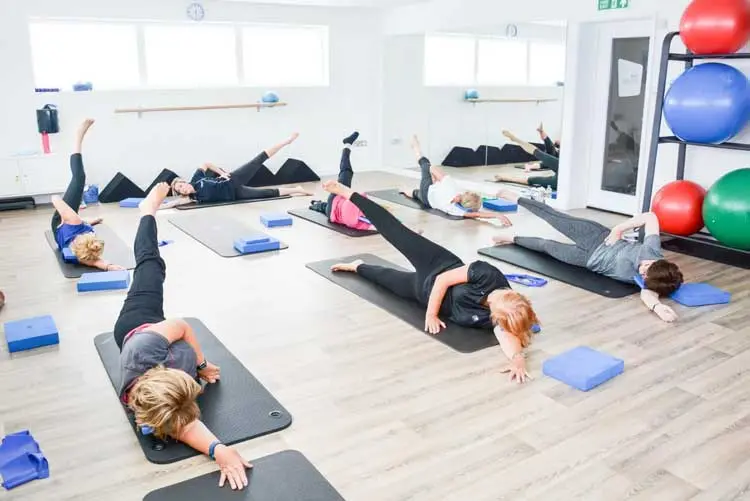Why Pilates is Magic for Low Back Pain
If you’ve suffered from dreaded back pain, you’ve probably heard about so many different therapies and exercises that are supposedly designed to help your pain. Among them, Pilates stands out time and time again as one of the most effective types of exercise for back pain. But what makes Pilates so special? For years, it was assumed it was all about core strength. However, recent studies suggest the key to overcoming back pain is a positive movement experience — and Pilates is the perfect method for that.

The Power of Positive Movement
Recent research in behavioural science shows that one of the strongest predictors of recovery from low back pain isn’t just about physical strength. Instead, it’s about self-efficacy — the belief in your ability to accomplish specific tasks or goals. In simple terms, if you believe you can move without pain, you’re far more likely to do so. People with low back pain who have high self-efficacy scores have an 80% chance of improving, while those with low self-efficacy have an 80% chance of not improving — no matter what the treatment is.
Here’s where Pilates shines. While traditional exercises might focus on strengthening, Pilates creates an environment where you can explore movement without pain. It builds confidence by offering positive movement experiences, which in turn increases self-efficacy and helps shift your mindset towards recovery.
Why Physical Strength Isn’t the Whole Story
For many years, rehabilitation focused primarily on physical measures like core strength, flexibility, and balance as predictors of recovery. However, studies have shown that while these factors do improve with Pilates, they don’t necessarily correlate with returning to full function. So, what really drives the improvement? The research says, it’s the psychological shift that comes from experiencing movement without pain, restoring hope, and empowering you to take control of your recovery.
How Pilates Creates Positive Movement Experiences
One of the reasons Pilates works so well for low back pain is its ability to tailor exercises to the individual. With adjustable equipment like Reformers, small classes, led by Therapy experts, we can make sure we modify the load, range of motion, and support to suit individual needs. This allows you to progress gradually, gaining confidence with each movement. Over time, these small victories add up, motivating you to continue exercising and building on your success.
At goPhysio, we’ve seen this first-hand in our Pilates classes at goPhysio, which have been running for over 12 years now!
Reclaiming Control of Your Movement
Pilates also helps shift your mindset from an external locus of control — where you believe that outside forces control your life (“My back won’t let me do that anymore”) — to an internal locus of control, where you feel empowered to take charge of your own recovery. By adjusting your body position, resistance, and repetitions in Pilates, you start to feel like you have control over your environment and your body. This sense of empowerment can be a game-changer in the recovery process.
Key Principles of Pilates
To maximise these benefits, Pilates instructors can focus on a few key principles to enhance their clients’ experiences:
- Whole Body Approach: Pilates emphasises the connection between body, mind, and spirit. Encouraging you to believe in your ability to improve is critical in helping you own your health and recovery.
- Breath Control: Learning how to control your breathing can help manage pain, reduce anxiety, and improve movement efficiency, particularly in the spine.
- Mindful Mobility: Encouraging mobility in areas like the thoracic spine, hips, and ankles can help distribute movement and reduce strain on the lower back, quickly alleviating pain.
- Modifying Load: The adjustable resistance in Pilates equipment and adaptability of the exercises enables you to be safely challenged at your own pace, gradually building the strength and confidence needed for daily activities.
- Dynamic Alignment: Observing and facilitating efficient movement patterns helps create positive movement experiences, allowing you to move more freely without pain.
- Movement Integration: By considering the whole person — including your beliefs and experiences — we can help you build confidence in your ability to move and recover.
In Conclusion
Pilates offers more than just physical benefits for those suffering from low back pain. It provides a supportive environment for rebuilding confidence, increasing self-efficacy, and reclaiming control of your life. If you’re struggling with back pain, Pilates could be the key to not just strengthening your body, but also changing the way you think about movement, giving you the tools to recover and stay pain-free long-term.
Ready to start your journey to a stronger, healthier back? Book a consultation or join one of our specialised classes at goPhysio to discover how Pilates can help you feel empowered and in control of your recovery.
Find out more about our Pilates here.



